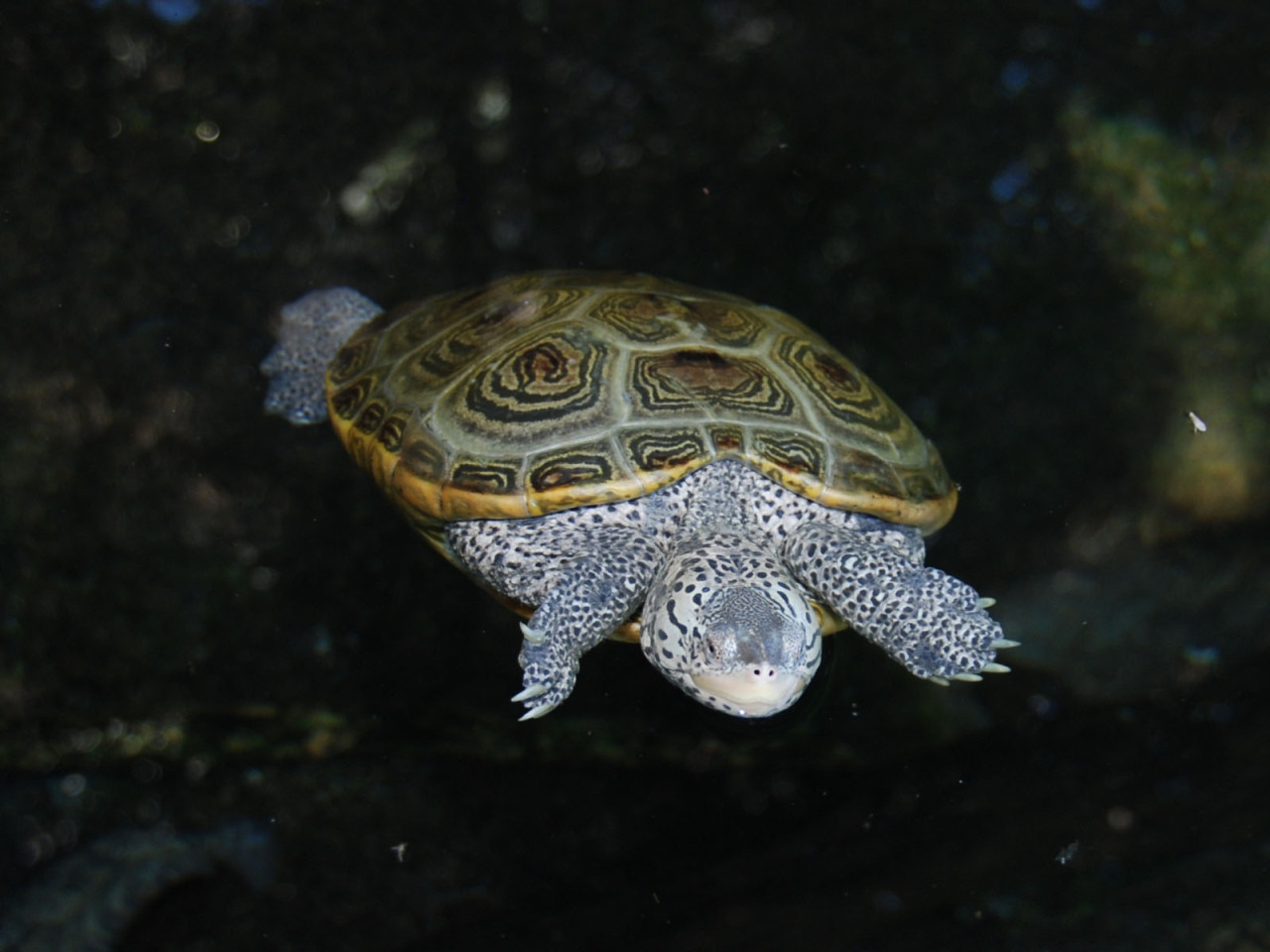Diamondback terrapins can exhibit aggressive behavior. In their natural habitat, they can be territorial and defend themselves when they feel threatened.
However, their aggression is generally limited and not usually directed towards humans. Instead, they are more likely to display defensive behaviors such as hissing, biting, or retreating into their shells when approached. It is important to treat diamondback terrapins with respect and caution to avoid triggering any potential aggression.

Credit: www.austinsturtlepage.com
Understanding Diamondback Terrapin Behavior
Diamondback Terrapins are not inherently aggressive towards humans, but their behavior may differ in the wild compared to captivity. It is important to understand their natural habitats and behaviors to better interact with them.
Natural Habitats And Behaviors
Diamondback Terrapins typically inhabit brackish coastal areas, including estuaries, salt marshes, and lagoons. They have a preference for areas with sandy or muddy bottoms, where they can bury themselves partially to ambush prey and avoid predators. These turtles are highly adapted to living in the transition zone between freshwater and saltwater, as they possess glands that allow them to excrete excess salt.
Territorial Instincts
Diamondback Terrapins exhibit territorial behavior, particularly during the breeding season. Males actively defend their territories, engaging in aggressive displays to deter intruders. Females, on the other hand, move between multiple male territories to select suitable nesting sites.
Reproductive Behavior
Mating occurs from April to July, with females seeking areas rich in soft sediments for nesting. They lay eggs in burrows they dig or in elevated areas above the high tide line. Hatchlings emerge two to three months later and make their perilous journey to the water’s edge. Understanding and conserving their nesting habitats is vital for the survival of diamondback terrapin populations.
Credit: www.austinsturtlepage.com
Debunking The Aggression Myth
Diamondback terrapins have a reputation for being aggressive, but this is largely a myth. While they may display defensive behavior when threatened, they are not naturally aggressive creatures. Terrapins prefer to avoid confrontation and will usually retreat into their shells or attempt to swim away if they feel threatened.
There are several reasons why terrapins may exhibit defensive reactions. One reason is their territorial nature. They will defend their territory if they perceive a threat to their nesting areas or food sources. Another reason is their natural instinct to protect themselves from predators.
Preventing negative encounters with terrapins is important for both humans and the turtles themselves. It is recommended to keep a safe distance and give terrapins the space they need. Avoid chasing or cornering them, as this can cause them to feel threatened and display defensive behavior. Additionally, it is crucial to never disturb terrapin nests or habitats.

Credit: www.chelonia.org
Conclusion
To sum up, while diamondback terrapins may exhibit aggressive behaviors in certain situations, it is important to understand the underlying factors behind their behavior. By providing a suitable habitat and proper care, these turtles can be kept in a more peaceful state.
Remember, thorough research and responsible ownership are key in ensuring the well-being of diamondback terrapins in captivity.





Leave a Reply